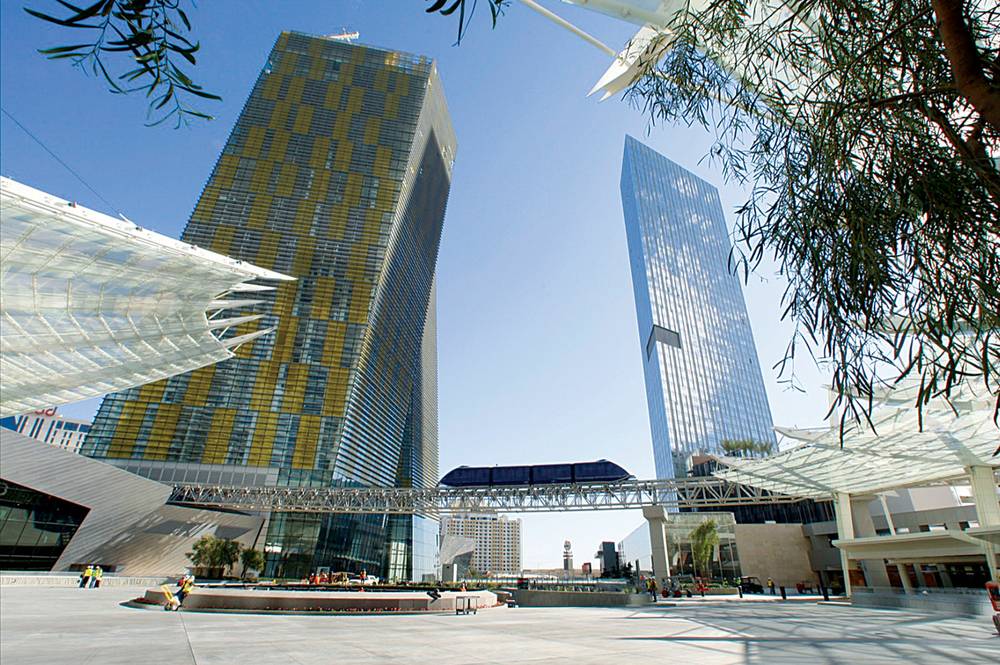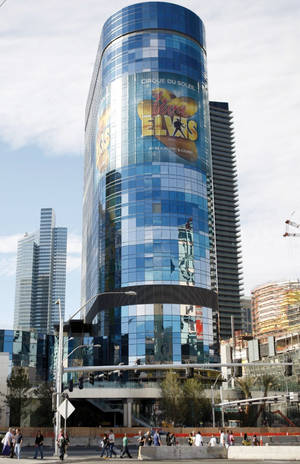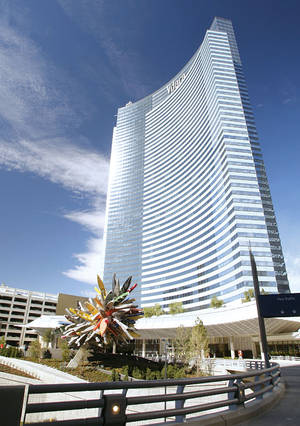One effect of seeing CityCenter up close, as I did on a recent media tour, is that the overwhelming too-muchness of it—all those buildings! architecture as entertainment! so many bars, lounges, restaurants!—tends to crowd from your mind the harder realities. The enormous financial risk it represents, the deaths and injuries involved in its construction, an entire city’s hope that this is the pivot our economy needs to turn around.
Of course, the barrage of headlines (“Las Vegas rebound riding on $8.5B CityCenter”) eventually brings you back to earth, but even so, there’s something irresistible about the place as a place.
There are plenty of beautifully and expensively articulated interiors in CityCenter, from the soaring, skylighted ceilings of Crystals to a dozen lounges, gaming areas and miscellaneous alcoves that have been designed down to the last cocktail napkin. But what struck me the strongest were plazas and pocket spaces outside. After all, there’s no shortage of pretty rooms in this town. But there are few enough spots where you can be outside amid four or five tall, haute buildings shouldering together in an urban density. Downtown, obviously, at least in terms of density, if not gleaming architectural bravura. But the Strip? For the most part, resorts are too widely spaced for that. (CityCenter packs its towers into acreage roughly similar to Bellagio’s.)
There’s something animated about the entry plaza that fronts Aria, the Mandarin Oriental, the two Veer residential towers and the Crystals mall. In large measure it is the scale rather than the building design—as I was standing on the elevated walkway in front of the Mandarin, the Veer towers looked almost close enough to touch, in contrast to the sharp-edged Mandarin rising at my back and the curved mass of Aria across the driveway. Similarly, in the public space at Vdara, the explosion of small boats that is Nancy Rubins’ artwork “Big Edge”—50 feet tall, 80 feet long—isn’t swallowed by the architecture around it.
Everywhere in CityCenter, bars and restaurants spill out onto patios, and between Aria and Crystals is a tiny park hosting Henry Moore’s stone sculpture “Reclining Connected Forms” next to a placid pool and trees. I can’t say I fully embrace the company hyperbole on this spot (“If you sit here and look at the sculpture and up at the Aria tower and see how it shimmers in the sunlight, you will think you’ve been transported to a different place,” MGM Mirage CEO Jim Murren told the Sun. “It’s like nothing I have seen before.”), but, pending the installation of benches that weren’t there when I was, it’s a nice gesture to the noncommercial functions of a would-be city center.
About the art: The artists whose work I was least jazzed about being in CityCenter’s collection—Henry Moore and Claes Oldenburg/Coosje van Bruggen—are lent new interest by the way they’re placed. You can get right up to them. Moore’s abstractish sculpture is still boringly safe, and Oldenburg’s oversized typewriter eraser still strikes me as merely clever, but their approachability in this setting makes them worth a second look.
Maya Lin’s “Silver River,” a slender, topographical re-creation of the entire Colorado River, which hangs in Aria’s lobby, is as cool, conceptually, as it sounds, but after the first blush (“awesome,” I think I said) it hasn’t shimmered in my memory the way I assumed it would. Guess I’ll have to go back for a second look.










Previous Discussion: